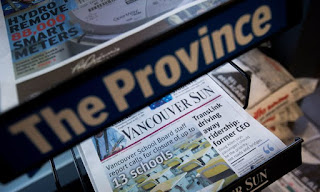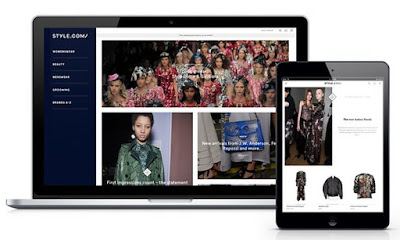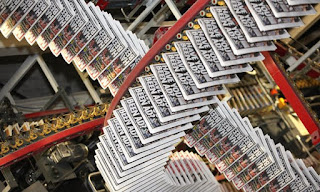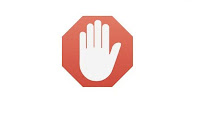NDM case study: How has news changed?
- 2/3rds of adults use the TV for news, compared to 3/4rs in 2014
- 41% of UK adults use the internet or apps for news, remaining the same from 2014
- Newspapers are used by 31%, a decrease from 40% in 2014 and 2013
- People using radio for access to the news reduced from 36% in 2014 to 32% in 2015
- 51% of people aged 16-24 use TV for news as oppose to 86% of those over 55
- In terms of newspaper, 21% aged 16-24 and 44%
- With internet/apps, 59% people aged 16-24 and 23% for over 55s
- Men more likely than women to use any of the four main platforms for news (TV - 69% of men, 65% of women)
- People in the AB socio-economic group are more likely than those in DE to consume news on any of the main platforms
The most popular platforms to access news on are television, internet/apps, newspapers and radio. In recent years while there has been an increase in the use of the internet/apps to access news on, all the other platforms have been seeing decreases representing the impact the digital revolution is still having.
The main platform on which over 55s access news on is television (86%) while with young people as we'd come to expect it's internet/apps (59%). Platforms like newspaper and radio tend to be particularly unpopular with the younger age group (21% and 23% respectively).
From a socio-economic standpoint, being in the DE group tended to mean being more likely than those in AB to get access to news from social media (52% vs (40%), whereas ABs would be more inclined to use websites/apps of newspaper publications to get their access. The attitude we get an idea here is that those belonging in the AB group are a lot more traditional and want to hear their stories from what they'd deem a much more trustworthy and reliable source as oppose to one susceptible to things like hoaxes.
The average number of different news sources that are used by in people in England is 3.4 (out of the 4 main platforms) which is a reduced number to 3.8 in 2014.
News consumption on television has managed to change firstly, in the sense that the total hours of national and international views have decreased. In 2014 each adult on average watched 108 hours while in 2013 it was 115 and 2011 when it was 121. These hours have reduced for young people in particular who since 2010 have had a 8% decrease in their total viewing hours.
National newspaper reach has been on the decrease particularly, with it since 2005 decreasing by 27% among adults (72.4% to 45.4%).
As of 2015, 29.3% of newspaper readers are 15-24 and 67.9% are over-65s.
The most popular newspapers in the UK are The Sun, Daily Mail, Daily Mirror, Metro and The Times. The viewpoints of these papers vary from left to right wing, with a few of them also taking a more centrist approach.
10)
News consumption that occurs online varies quite considerably in terms of age, gender and socio-economic group. For example, 59% 16-24 year olds in the UK say they use the internet or apps for news while only 23% of those aged 55+ use them. Simultaneously, 53% of those in the ABC1 socio-economic group use
online sources for news, while just 32% of those in the C2DE socio-economic
group use them.
11)
43% of respondents say they use social media sites as a way of accessing the news. From an age standpoint, 61% of 16-24s who use the
internet/ apps for news say they use social media sites compared to just 26% of
those aged 55+. Socio-economically, people in the (52%) group are
more likely than those in AB (40%) to use social media sites for news.
12)
Just 10% of online news users use only social media sites to access news.
13)
The Daily Mail and The Sun are the most popular sites for news.
14)
61% of 16-24s tend to use social media sites to access the news
15)
Audiences discover news stories in a multitude of ways. While it can be through the more conventional method of finding news from the app/website of a newsprovider, they can also hear stories through things like social networks.
New/digital media: audience and institution
Benefits for audiences with the changes that new and digital media have had on the news industry, mainly come in the sense that in terms of access, people have a lot more variety as to what exactly they can get their news on. It could come in the form of a newspaper, TV, Internet or radio, and these options only mean that audiences aren't restricted to singular platforms.
17)
Benefits for institutions are mainly evident in that they have an even wider audience that they have the opportunity to reach, distributed across all of these different platforms. Not only this but with the technological emergence that has occurred, affecting the news industry, their focus can tend to be more on the online platform and that's quite beneficial for them because things like advertising revenue are more easily obtainable on it than they are on platforms like newspapers.
18)
A downsides to the changes new digital media have had on the news industry for audiences is that due to the lack of gatekeepers on things like social networks, blogs and websites, audiences can get access to information that is not only fake, but also unreliable such as death hoaxes.
19)
Downsides to institutions mainly have to do with those involved in the newspaper industry. This is due to the billions in advertising revenue that has went to online services like Facebook as oppose to the physical newspapers and resulting in large amounts of journalists losing their jobs.
20)
I personally feel that audiences have benefited more from the changes to new digital media within the news industry. What strikes out as a particular benefit for them is having a wide range of platforms to be able to access news on. As a reiteration before rather than be restricted to using one platform such as print, they have the option of online and TV too. And while it can be said that news institutions still retain the amount of power they've had within the industry, 51% of respondents in the Ofcom report saying they used the website/apps of TV and radio companies to get news, the options to choice for audiences with things like social media can still be said to improve the situation that they were once in before, where they had to rely on institutions for their news coverage.







